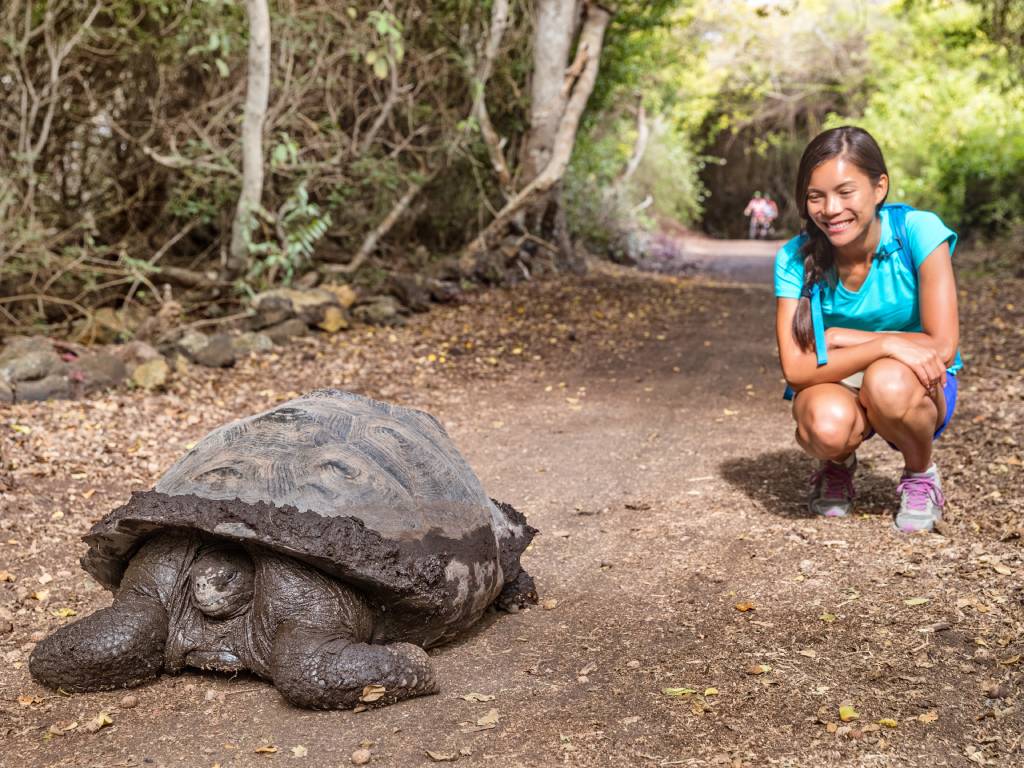The Galapagos Islands, known for their uniqueness and natural beauty, are home to diverse ecosystems that have captivated scientists and nature lovers from around the world. This archipelago, located in the Pacific Ocean and belonging to Ecuador, stands out for its rich biodiversity and its iconic giant turtles, which have been key in the evolution and conservation of unique species.
Exploring the hidden wonders
The group of volcanic islands that make up the Galapagos is distinguished by its geographic isolation and abundant endemic wildlife. This region has been fundamental in the development of the theory of evolution of Charles Darwin, who was inspired by the diversity of species to formulate his famous theory. The Galapagos are a living laboratory of evolution and an invaluable natural heritage for humanity.
History of the islands and their unique biodiversity
Over millions of years, the Galapagos have experienced geological and climatic processes that have shaped their landscape and fauna in exceptional ways. Animals such as marine iguanas, land turtles and frigate birds have evolved uniquely in this island ecosystem, adapting to extreme conditions and developing unique characteristics.
Giant tortoises, the iconic residents of the Galapagos
The giant Galapagos tortoises are considered one of the most representative symbols of this archipelago. With exceptional longevity and impressive size, these land tortoises have fascinated explorers and scientists for centuries. Their contribution to the biodiversity of the islands and their role in preserving the ecosystem make them true guardians of this unique land.
Unique wildlife encounters
The Galapagos Islands are known for hosting rare and endemic species found only in this special place. From majestic giant tortoises to striking marine iguanas and playful sea lions, exploring this region promises up-close encounters with exotic animals that will fascinate any nature lover.
The evolutionary adaptation of wildlife in the Galapagos offers fascinating insights into how these species have managed to survive and thrive in a unique and inhospitable environment. Each animal, from the smallest to the most imposing, has developed distinctive characteristics that make them unique in the animal kingdom.
The world’s largest land tortoise, a true giant that has captivated scientists and visitors alike, is just one of the wonders that can be found on the islands. Weighing up to 250 kilos, these imposing creatures are living witnesses of the evolution and biodiversity that defines the Galapagos.
Exploring the Galapagos is embarking on a unique adventure, where the beauty and diversity of wildlife surprises in every corner. Each species, each ecosystem, reveals the magic and wonder of a place that has captivated scientists and travelers for centuries. Immerse yourself in this fascinating world and discover the greatness of wildlife in its purest and most extraordinary state.
Exploring the Diverse Ecosystem
In the Galapagos Islands, there is the largest turtle in the world, a true giant that has evolved to become a unique being on Earth. These islands, famous for their giant tortoises, are a refuge for wildlife and a place of rare natural beauty.
The Galapagos Islands have been shaped over millions of years by volcanic activity, making them an exceptional and fascinating place to explore.
When you set foot on this archipelago in the middle of the Pacific Ocean, you can appreciate the incredible diversity of life that inhabits these volcanic environments. From marine iguanas to sea lions, the coexistence between fauna and humans in the Galapagos is an example of harmony and coexistence unique in the world.
Conservation and Future Sustainability
Conservation initiatives in the Galapagos are essential to protect the unique wildlife that inhabits these islands. The exceptional biodiversity of the Galapagos is of great importance, as it is home to species found nowhere else on the planet. Looking to the future and ensuring the long-term sustainability of Galapagos ecosystems is crucial to preserving this natural treasure for generations to come.
The commitment to conservation is reflected in the actions taken to protect the habitat and populations of native Galapagos species. From the creation of marine protected areas to the promotion of sustainable tourism practices, measures are being implemented to ensure that the rich biological diversity of these islands endures over time.
